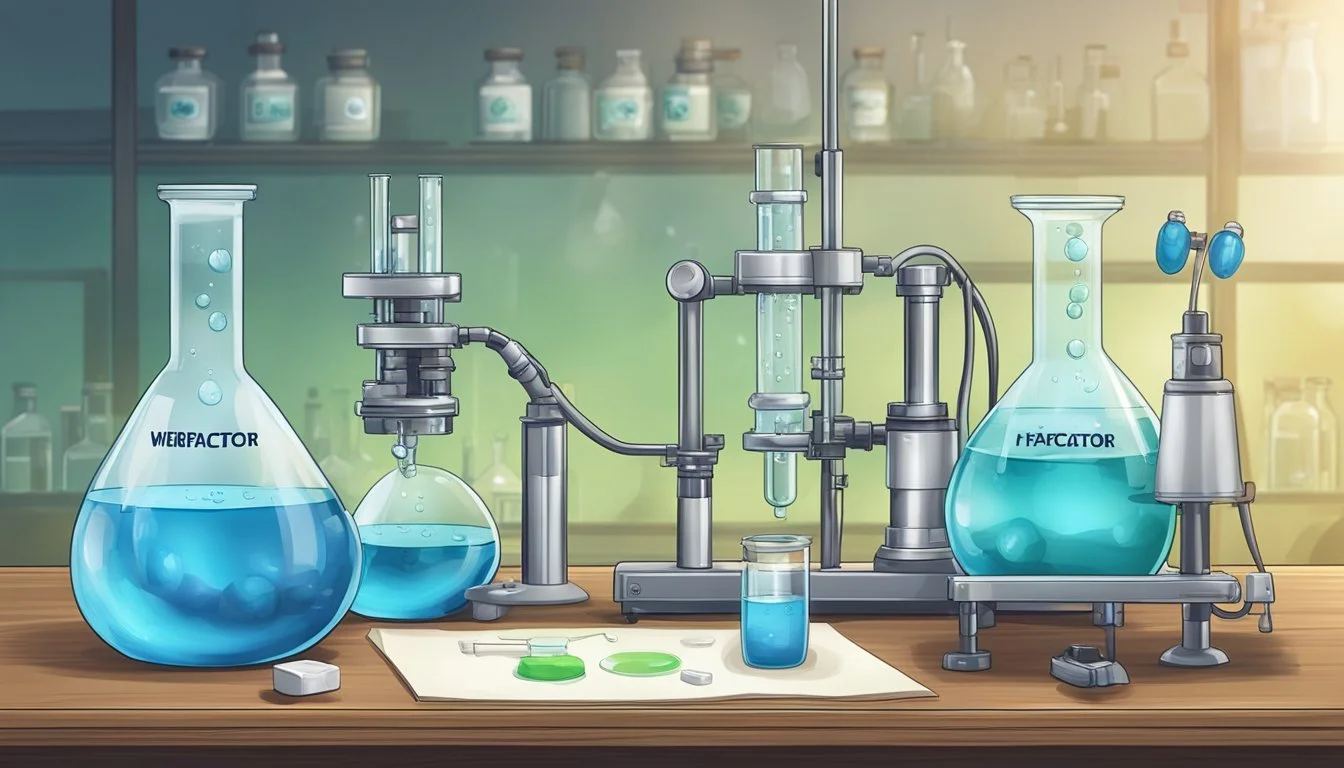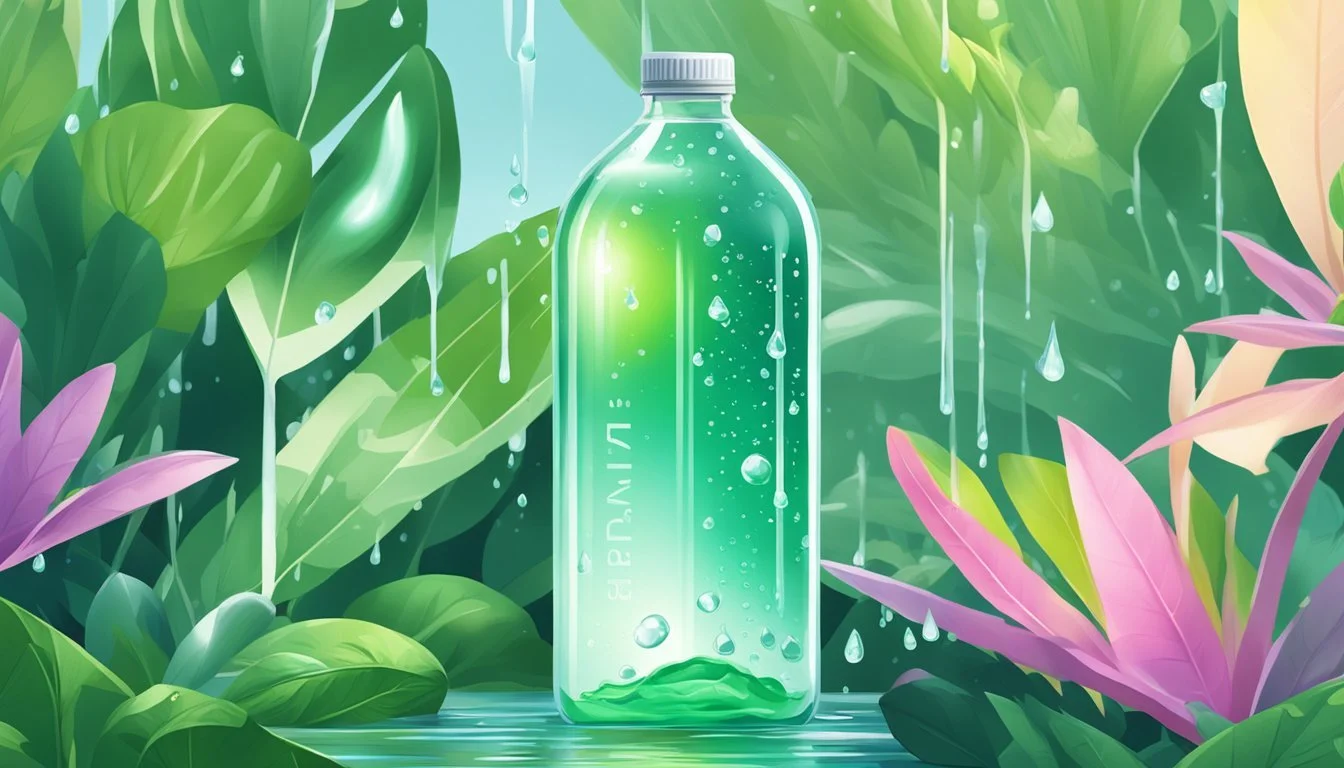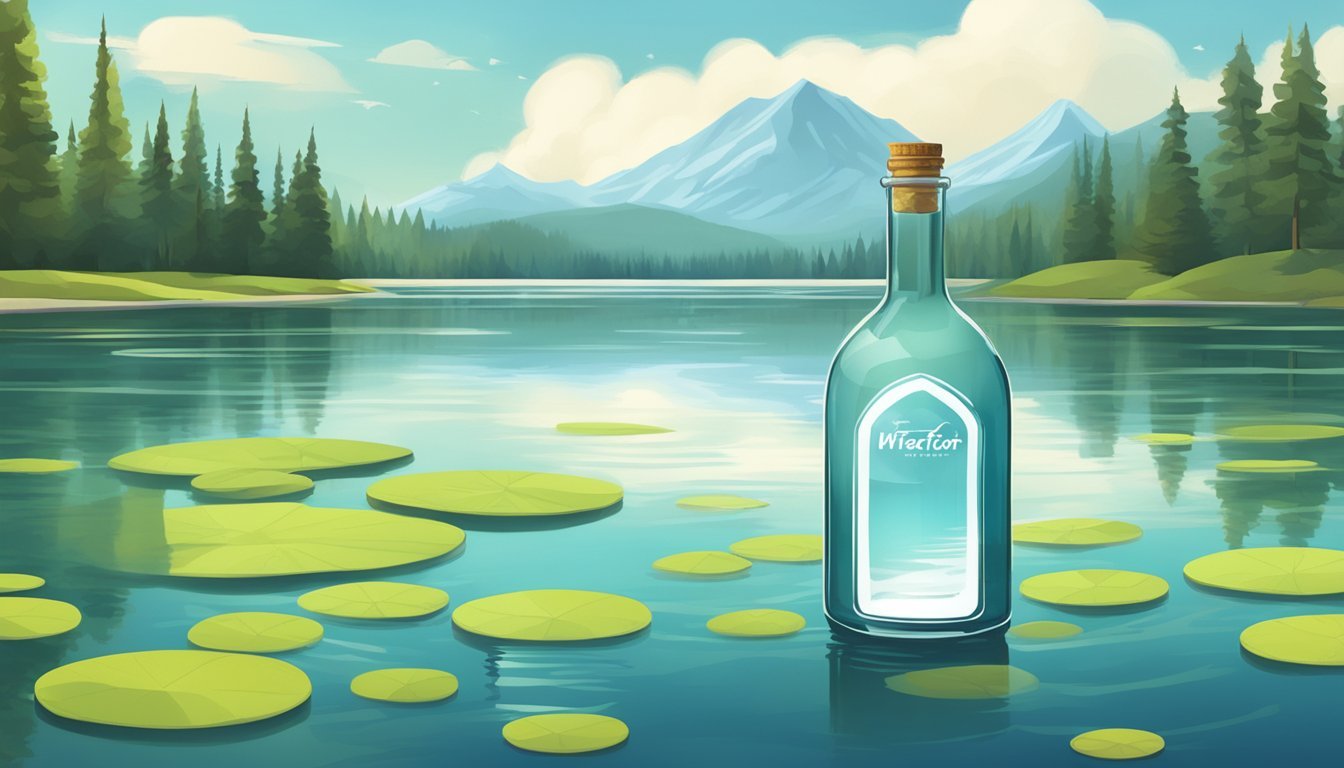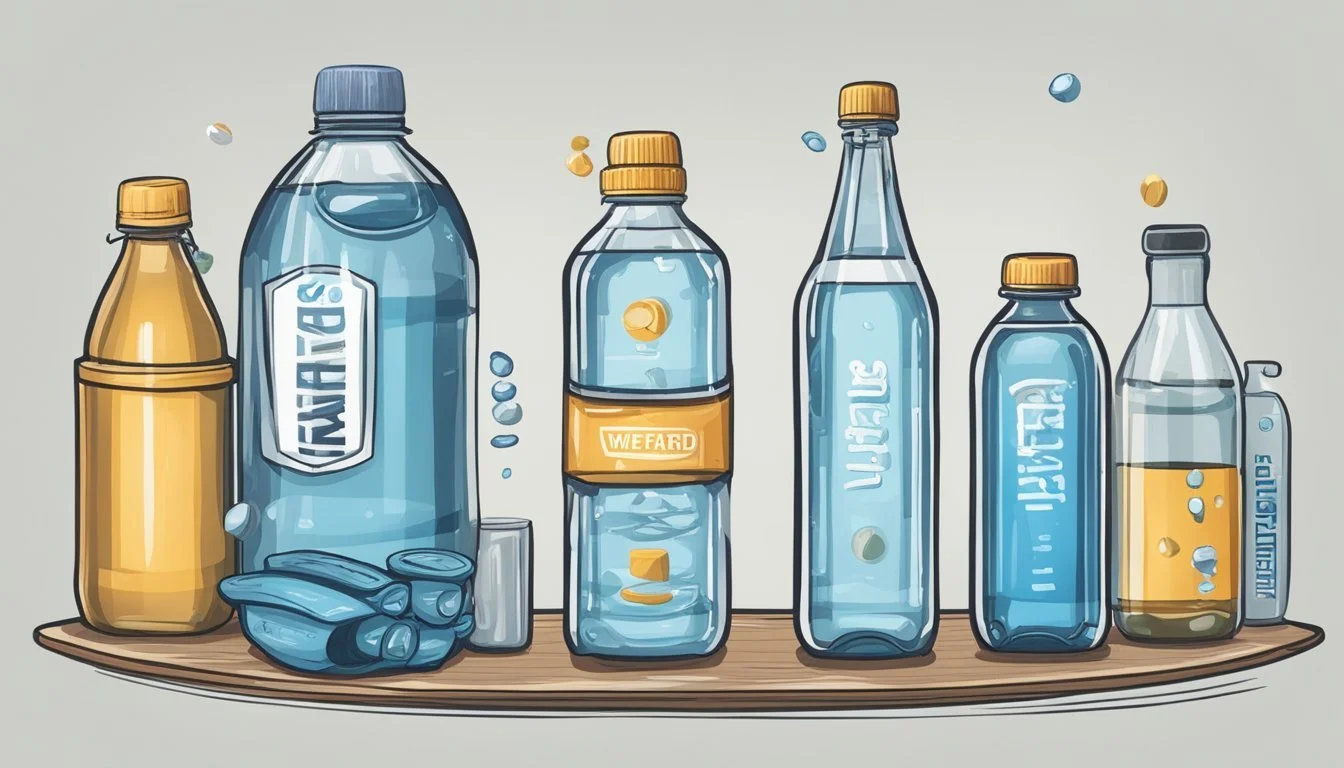Weird Water vs. HFactor
Comparing Two Unique Bottled Waters
Choosing the right bottled water can be surprisingly complex, with niche options like Weird Water and HFactor gaining traction in the competitive bottled water market. For those prioritizing taste, Weird Water captivates its audience with a distinctive flavor that stands out among standard offerings. Meanwhile, HFactor offers a unique proposition with its hydrogen-infused water, targeted at athletes and those seeking enhanced hydration benefits.
Weird Water appeals to a niche group of water aficionados who appreciate its unique taste profile. Its marketing hinges on this singular selling point, making it a favorite for those who seek more than just standard purified water. On the other hand, HFactor positions itself as an innovative choice, using added hydrogen to appeal to fitness-focused consumers who believe in the performance-enhancing benefits of hydrogen water.
Both brands aim to carve out their own segment in the bottled water market with their specialized offerings. While Weird Water attracts those seeking a unique drinking experience, HFactor's focus on athletic performance sets it apart. Ultimately, the decision between Weird Water and HFactor depends on whether the consumer values unique taste or potential athletic benefits.
The Rise of Specialty Waters
Specialty water brands such as Weird Water and HFactor are gaining traction due to their unique offerings and health benefits. Consumers are increasingly interested in what sets these brands apart.
Market Presence and Brand Overview
Specialty waters are becoming prominent in the market. Weird Water and HFactor are two notable brands.
Weird Water has built a reputation for its mineral-rich content, sourced from natural springs. It's marketed towards consumers looking for natural hydration.
HFactor distinguishes itself with hydrogen-infused water aimed at enhancing athletic performance and recovery.
Both brands leverage their unique selling points to differentiate themselves, appealing to specific consumer segments. The growing demand for health-focused products has driven their popularity.
Defining the Unique Selling Proposition
The unique selling propositions (USPs) of Weird Water and HFactor cater to different needs.
Weird Water's USP lies in its natural mineral content. It markets itself as pure and untouched, ideal for those seeking a natural hydration solution.
HFactor, on the other hand, emphasizes its hydrogen infusion technology. This is claimed to have benefits such as reducing inflammation and speeding up muscle recovery, appealing particularly to athletes and fitness enthusiasts.
Both brands carefully position their products to attract a niche but growing audience, driven by increasing health awareness.
Understanding Water Quality and Standards
Ensuring the quality of bottled water involves adherence to various health regulations, meticulous control of contaminant levels, and distinct purification processes. This guarantees safety and purity for consumers.
Health Regulations and Compliance
Bottled water in the United States must comply with regulatory standards established by the FDA and the EPA. The FDA oversees bottled water, ensuring that it meets safety and labeling requirements akin to those for public tap water.
The FDA mandates specific labeling requirements, ensuring consumers are informed about the source and treatment of the water. Additionally, regular monitoring and testing are required for compliance with various health regulations.
The EPA, responsible for public tap water, establishes contaminant guidelines that serve as benchmarks for bottled water as well. Ensuring compliance with these regulations is critical for maintaining public health standards.
Contaminant Levels and Purity
Contaminant levels in bottled water are a significant concern for both consumers and regulatory bodies. Common contaminants include PFAS chemicals, heavy metals, and microbial organisms.
Stringent testing helps keep these contaminants below harmful levels. For instance, consumer reports frequently check bottled water for toxic substances, leading brands to adopt rigorous testing protocols.
Ensuring low contaminant levels involves multiple steps. Manufacturers often use advanced filtration methods such as carbon filtering, reverse osmosis, and distillation. These processes remove impurities, ensuring the water's safety and enhancing its taste.
Natural Purity vs. Purification Processes
Natural springs or wells provide water sources with inherent qualities of purity. These sources often require less treatment to maintain quality standards. However, not all bottled water comes directly from such sources.
Many brands rely on purification processes to achieve desired purity levels. Techniques like the 7-step HydRO-7 filtration include sediment and carbon filters, reverse osmosis, and ozone treatment. These processes can remove bacteria, chemicals, and other impurities.
Consumers should be aware of the difference between naturally sourced and purified water. While both types meet regulatory standards, the methods used to achieve purity may influence taste and other characteristics. This distinction is crucial for informed decision-making regarding bottled water choices.
Composition and Health Impact
Weird Water and HFactor are both distinct in their composition and purported health benefits. This section explores the critical aspects of their mineral content and balance, emphasizing their potential effects on health.
Mineral Content and Balance
Weird Water is known for its unique blend of minerals. Calcium, magnesium, and potassium are present in balanced amounts. These minerals are essential for bone health, muscle function, and electrolyte balance.
HFactor stands out with its hydrogen-infused water. Though it lacks a wide range of minerals, the hydrogen infusion is claimed to enhance hydration and improve muscle recovery.
The sodium content in both brands is minimal, which is crucial for individuals monitoring their salt intake. Contaminant levels, including lead and arsenic, are strictly regulated, ensuring safety and purity for both brands.
List of Key Minerals:
Calcium: Important for bones and teeth.
Magnesium: Supports muscle and nerve function.
Potassium: Helps regulate fluid balance and muscle contractions.
Both Weird Water and HFactor provide different benefits, catering to varying health needs and preferences.
Water Enhancement Technologies
Both Weird Water and HFactor employ innovative technologies to enhance their bottled water, focusing on hydrogen infusion and alkaline properties.
Hydrogen Infusion and Antioxidant Benefits
HFactor sets itself apart by incorporating molecular hydrogen into its water. Hydrogen infusion is achieved through a process that dissolves hydrogen gas into the water, which claims to deliver significant antioxidant benefits. These antioxidants are believed to help reduce oxidative stress, potentially improving skin health and aiding in faster recovery after physical activities.
The injection of hydrogen aims to offer better hydration by making the water molecules more accessible at a cellular level. This technique is often marketed as enhancing athletic performance and overall wellness, though readers should verify these claims through scientific studies. The focus on antioxidants appeals to those looking for a healthier hydration option.
Alkaline Water and pH Levels
Weird Water differentiates itself with its alkaline water properties. The process involves adding minerals like calcium, potassium, and magnesium to raise the water's pH level, making it more alkaline. Typically, alkaline water has a pH level higher than 7, contrasted with the neutral pH of regular tap water.
The alkalinity in water is believed by some to neutralize acid in the bloodstream, which may promote various health benefits such as improved metabolism and increased energy levels. Advocates claim these alkaline properties can also help with acid reflux and other digestive issues. The appeal lies in its potential to offer a balanced and enhanced hydration experience.
The Importance of Hydration
Proper hydration is crucial for everyone, impacting physical and mental well-being. Water makes up a significant portion of the human body, playing a role in various bodily functions.
Health Benefits:
Digestion: Adequate water intake aids in digestion and nutrient absorption.
Detoxification: Water helps remove waste and toxins.
For athletes, hydration is directly linked to athletic performance. Dehydration can reduce endurance, increase fatigue, and impair coordination.
Athletic Performance:
Endurance: Staying hydrated maintains stamina.
Recovery: Post-exercise hydration aids muscle recovery and reduces soreness.
Maintaining Hydration:
Drink water regularly throughout the day.
Consume water-rich foods like fruits and vegetables.
Both Weird Water and HFactor aim to enhance hydration. Weird Water offers a unique blend of natural ingredients, while HFactor focuses on hydrogen-infused water for added benefits. Each brand targets specific hydration needs, catering to different lifestyle choices.
Tips for Hydration:
Before Exercise: Drink water to prepare the body.
During Exercise: Keep a water bottle handy.
After Exercise: Replenish fluids lost to sweat.
Taste and Consumer Preferences
Weird Water and HFactor offer distinct tastes that appeal to different consumer preferences. This section covers the specific flavor profiles and the nuances in taste that set these bottled waters apart.
Analyzing Flavor Profiles
Weird Water is noted for its unique taste, which targets a niche market. Its flavor profile carries subtle mineral notes due to its filtration and mineral infusion process. This water is designed to cater to consumers looking for a slightly different experience compared to standard bottled water brands.
HFactor, meanwhile, emphasizes its hydrogen infusion, which claims to provide enhanced hydration. The brand markets this feature as contributing to a slightly lighter, more refreshing taste. Consumers seeking innovation in their bottled water are attracted to HFactor's distinctive taste profile.
Taste Profiles and Water Taste
The taste of Weird Water is often described as clean yet complex. This complexity comes from its carefully balanced mineral content. It offers a refreshing break from the usual purified waters, appealing to those who enjoy a slight mineral aftertaste.
HFactor’s water taste is characterized by its purity and crispness. The added hydrogen is tasteless but may influence the perception of freshness. Consumer feedback indicates that HFactor has a subtly smoother mouthfeel, making it a preferred choice for those who prioritize a neutral taste with a hint of innovation.
Environmental Considerations
Weird Water and HFactor's environmental impact encompasses their bottling processes, use of natural springs, and overall sustainability. This exploration covers critical aspects like plastic usage, aquifer sourcing, and carbon footprints.
Bottling Processes and Plastic Usage
Weird Water uses plastic for their bottles, focusing on reducing weight to lower plastic use. They claim to use BPA-free materials, which are better for the environment but still pose a disposal challenge.
HFactor, marketing hydrogen-infused water, also relies on plastic bottles. They emphasize the use of recyclable materials and have initiatives aimed at promoting recycling.
For both brands, the reliance on plastic adds to environmental concerns. Plastic production and disposal contribute significantly to pollution, with millions of tons ending up in oceans annually.
Aquifers and Natural Springs
Weird Water sources its water from natural springs, ensuring a distinct taste that attracts specialized consumers. However, the sustainability of withdrawing water from these sources can lead to depletion concerns.
HFactor does not specifically use natural springs. Instead, their water undergoes hydrogen infusion, a unique selling point but potentially less impactful on natural water reserves.
The protection and management of these water sources are critical for environmental sustainability. Over-extraction can lead to ecological imbalances and reduced availability for future generations.
Carbon Footprint and Sustainability
The carbon footprint of Weird Water revolves around its plastic production and transportation. They have measures in place to offset emissions but face challenges in fully neutralizing their environmental impact.
HFactor, with its hydrogen infusion technology, implements energy-intensive processes. Their efforts include exploring more sustainable energy sources and improving efficiency to minimize the carbon footprint.
Both brands are making strides towards sustainability. Their focus on reducing carbon emissions, though promising, requires continuous improvement and adaptation to more eco-friendly practices. High energy demands and reliance on non-renewable resources remain key challenges in their paths to sustainability.
Consumer Awareness and Education
Consumers seeking to make informed choices between bottled water brands like Weird Water and HFactor should pay attention to aspects like label transparency and the differences between purified and spring water.
Label Transparency and Ingredient Lists
Understanding what's on the label is crucial for making an informed decision. Bottled water labels should clearly indicate the source of the water, whether it’s natural spring or municipally sourced and purified.
The ingredient list is also essential. For instance, if minerals are added to enhance taste, this should be explicitly stated. HFactor, known for hydrogen-infused water, states this feature prominently. Consumers can look for certifications such as NSF or EPA to ensure quality.
Label transparency can prevent misunderstandings about the product’s benefits or contents. Misleading labels might suggest health benefits that are not substantiated. Reading and understanding labels helps consumers avoid overpaying for features they may not need or that are available in other options.
Understanding Purified vs. Spring Water
Purified water is typically sourced from the tap and undergoes rigorous filtration processes to remove contaminants. These methods can include carbon filtration, deionization, or reverse osmosis. HFactor often uses purified water as its base, ensuring it meets strict purity standards.
Spring water, like what Weird Water offers, originates from natural springs and is bottled at the source. It’s minimally processed, which means it retains its natural mineral content. This can affect both taste and perceived health benefits. Consumers must decide whether they prefer the mineral content of spring water or the purity of processed water.
Knowing the difference between these types helps consumers choose the right product for their hydration needs. While purified water may offer more controlled quality, some prefer the natural taste of spring water.
Beyond Drinking: Other Uses of Bottled Water
Bottled water serves numerous purposes beyond simple hydration. It finds utility in culinary settings as well as in the creation of innovative beverages and cocktails.
Culinary Applications
Bottled water can be a critical ingredient in various cooking processes. Chefs often use bottled water to ensure consistency and purity in their recipes. When making delicate broths or soups, the absence of chlorine and other tap water additives allows for a cleaner taste.
For baking, bottled water can improve the texture and rise of breads and cakes. This is due to its consistent mineral content, which interacts predictably with yeast and other rising agents.
Using bottled water in coffee and tea preparation can significantly affect the final flavor profile. Considering the water’s purity, it allows the authentic and nuanced flavors of the beans and leaves to stand out.
Innovative Beverages and Cocktails
In the realm of mixology, bottled water plays a role in crafting high-quality cocktails. Sparkling water, for instance, adds effervescence and can enhance the mouthfeel of mixed drinks. Brands like Weird Water and HFactor, known for their unique hydration properties, can be used to create signature cocktails.
Flavored water serves as a base for mocktails or low-calorie mixers. Adding lemon or other citrus fruits can create refreshing, vibrant drinks without additional sugars found in sodas.
Using clean and pure bottled water in protein shakes ensures that the flavors of the protein powder aren’t overwhelmed by impurities. This is particularly important for those making shakes with milk or dairy substitutes, striving for a smooth and balanced taste.
Bottled water, whether still or sparkling, offers versatility in both culinary and cocktail applications, significantly enhancing the quality and taste of various recipes and beverages.
More About Weird Water
Aqua Carpatica vs Weird Water: Which Bottled Water is Better?
Cascade Mountain vs Weird Water: Which Bottled Water is Better?
Core Hydration vs Weird Water: Which Bottled Water is Better?
Crystal Geyser vs Weird Water: Which Bottled Water is Better?
Hawaii Volcanic vs Weird Water: Which Bottled Water is Better?
Hawaiian Springs vs Weird Water: Which Bottled Water is Better?
Icelandic Glacial vs Weird Water: Which Bottled Water is Better?
Mountain Valley Spring Water vs Weird Water: Which Bottled Water is Better?
Nestle Pure Life vs Weird Water: Which Bottled Water is Better?
Poland Spring vs Weird Water: Which Bottled Water is Better?
Purely Sedona vs Weird Water: Which Bottled Water is Better?
Richard's Rainwater vs Weird Water: Which Bottled Water is Better?
San Pellegrino vs Weird Water: Which Bottled Water is Better?
Solan de Cabras vs Weird Water: Which Bottled Water is Better?
Talking Rain AQA vs Weird Water: Which Bottled Water is Better?
Weird Water vs Kirkland Signature: Which Bottled Water is Better?
Weird Water vs Whole Foods 365: Which Bottled Water is Better?
Whole Foods Italian Still Mineral water vs Weird Water: Which Bottled Water is Better?
More About HFactor
Icelandic Glacial vs HFactor: Which Bottled Water is Better?
Kirkland Signature vs HFactor: Which Bottled Water is Better?
Mountain Valley Spring Water vs HFactor: Which Bottled Water is Better?
Richard's Rainwater vs HFactor: Which Bottled Water is Better?
Whole Foods Italian Still Mineral water vs HFactor: Which Bottled Water is Better?







